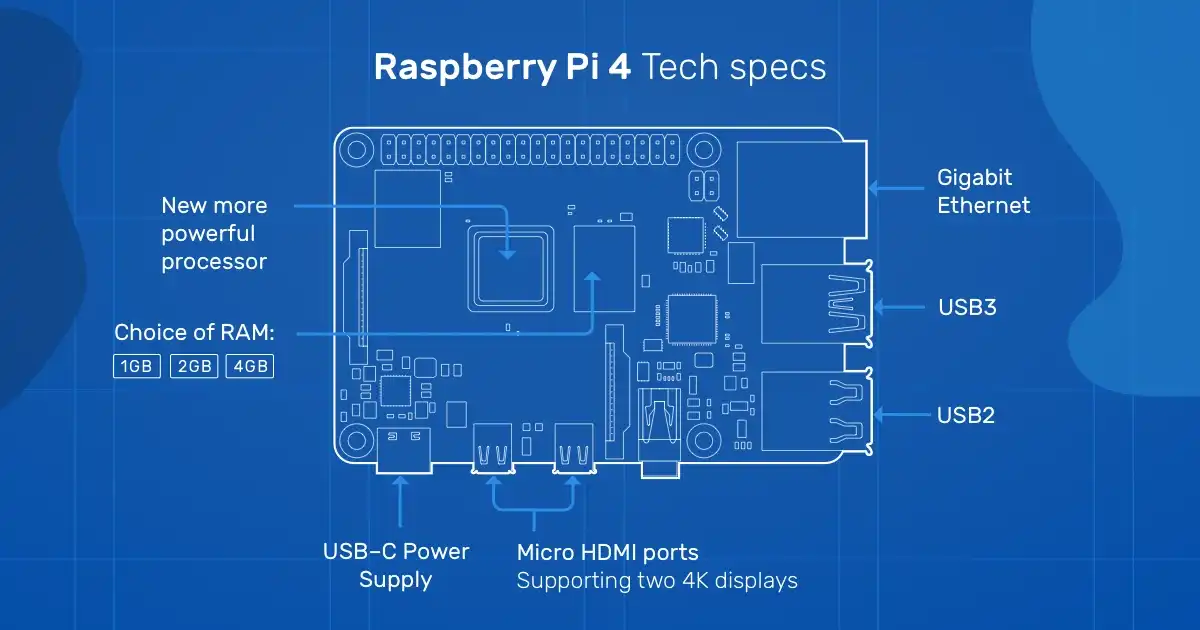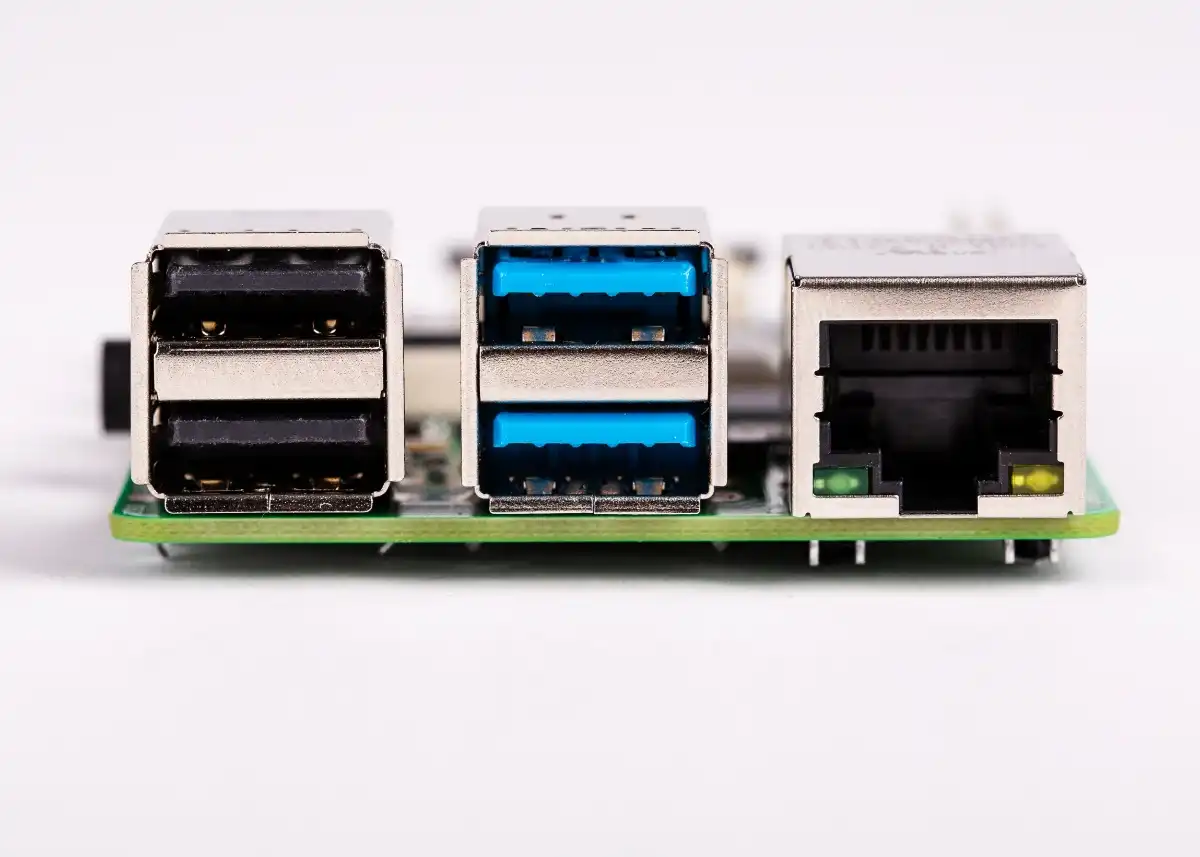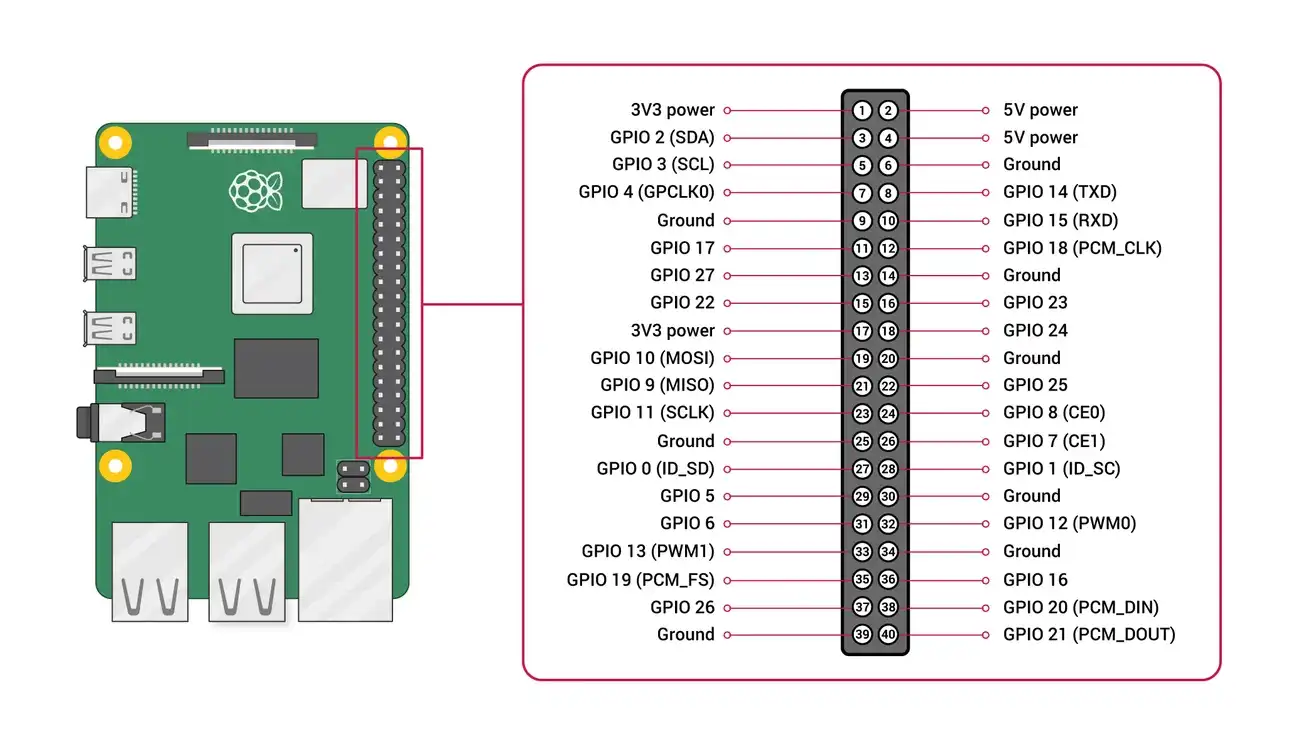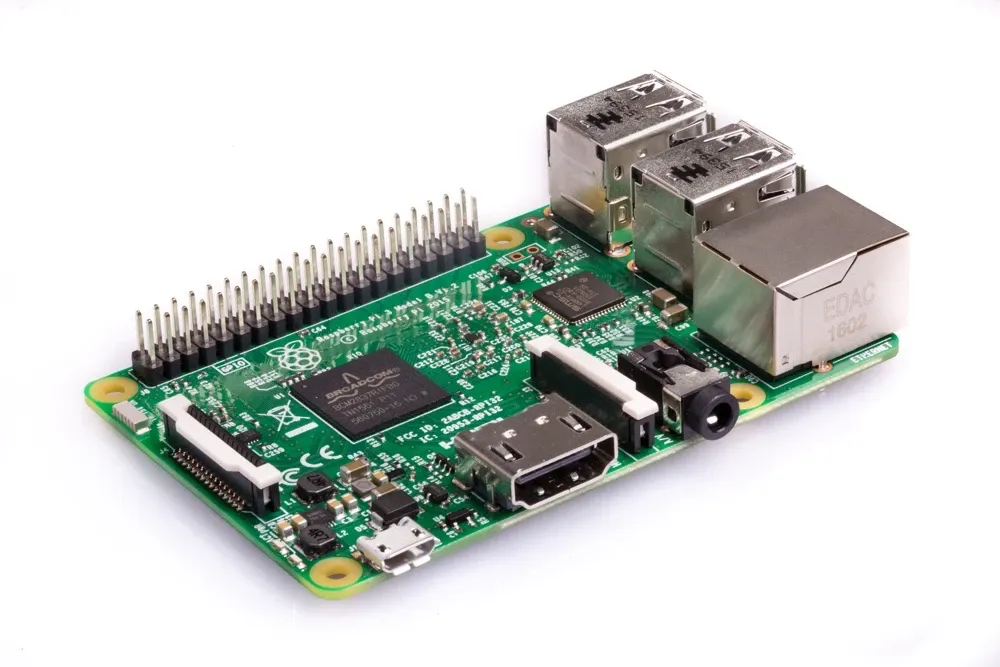The Raspberry Pi 4 Model B is a compact computer that offers desktop-level performance. It works well with smart home applications and IoT devices. It has a quad-core 64-bit ARM Cortex-A72 processor running at 1.5 GHz. On newer silicon, it can boost up to 1.8 GHz. You can choose up to 8 GB of LPDDR4 RAM. This power lets you run a media server, manage sensors, or control security cameras.
Hardware Specifications
The Raspberry Pi 4 Model B features a Broadcom BCM2711 quad-core Cortex-A72 processor running at 1.5 GHz, with configurations offering 1 GB, 2 GB, 4 GB, or 8 GB of LPDDR4 SDRAM for efficient multitasking. The VideoCore VI GPU delivers hardware-accelerated 4Kp60 decode with support for H.265 and H.264 codecs. Connectivity includes Gigabit Ethernet, dual-band Wi-Fi 5, and Bluetooth 5.0, while the I/O features 2 × USB 3.0, 2 × USB 2.0 ports, and a 40-pin GPIO header that allows seamless integration with a variety of sensors and actuators for home automation projects.

Connectivity and Ports
The Pi 4 Model B features a robust suite of ports ideal for home automation hubs. Dual micro-HDMI ports support dual 4Kp60 displays for wall-mounted dashboards or monitoring screens. The USB-C power input (5 V/3 A) provides stable power, with optional Power over Ethernet (PoE) available via the official PoE HAT for cleaner installations. The 3.5 mm audio jack and HDMI audio output enable voice announcements and alerts, while the 40-pin GPIO header connects sensors, relays, and actuators for complete home automation integration.

Display and Multimedia
Perfect for wall-mounted dashboards or media centers, the Pi 4 Model B offers dual 4Kp60 video output via micro-HDMI ports with support for various resolutions and refresh rates. Hardware-accelerated H.265 (4Kp60) and H.264 (1080p60) video decode ensure smooth playback of high-definition content with minimal CPU usage. The board is compatible with official camera modules and displays, making it ideal for surveillance systems and interactive control panels.

Accessory Support
Extend your setup with official Raspberry Pi accessories. The Camera Module provides high-definition imaging and video capture for security applications and time-lapse projects. The PoE HAT delivers both power and network connectivity over a single Ethernet cable, simplifying installations in hard-to-reach locations. The Sense HAT offers environmental sensing with temperature, humidity, pressure, and motion sensors. Additional expansion HATs include relay boards, servo controllers, and custom PCBs that enhance smart home functionality.

Use Cases in Smart Home
The Raspberry Pi 4 Model B excels in home security applications by integrating PIR motion sensors, recording footage with compatible cameras, and sending real-time alerts to your devices. For climate control, it can automate HVAC systems based on temperature and humidity readings from connected sensors. As a voice assistant hub, it runs Mycroft AI or interfaces with Alexa and Google Assistant for hands-free control. The USB 3.0 ports provide fast storage access for hosting media servers like Plex, Kodi, or Emby, delivering seamless streaming throughout your home.
Getting Started
- Flash Raspberry Pi OS to a microSD card using Raspberry Pi Imager.
- Power Up with a certified 5 V/3 A USB-C adapter or PoE HAT.
- Network Setup: Connect via Ethernet or configure your Wi-Fi credentials.
- Secure Your Hub: Change the default
pipassword and enable automatic updates. - Install Automation Software: Use Home Assistant, OpenHAB, or a similar platform.
- Attach Sensors & Actuators via GPIO to build your complete smart home hub.
After setup, the Raspberry Pi 4 Model B runs efficiently and supports many software options. You can adjust GPU memory, turn on hardware acceleration, and set safe overclocking. Its Gigabit Ethernet and dual-band Wi-Fi keep your network stable. Bluetooth 5.0 connects low-energy sensors easily. You can use Docker or Kubernetes on ARM to run home automation services and edge computing tasks. You can also try machine learning with TensorFlow Lite, add voice recognition, and build custom control dashboards. Enjoy the open-source ecosystem to make your smart home work just the way you like.
Start exploring the Raspberry Pi 4 Model B today!
With its versatile GPIO interface, powerful processing capabilities, and extensive community support, the Raspberry Pi 4 Model B serves as an ideal platform for developers, hobbyists, and professionals exploring the Internet of Things. Whether you're prototyping new sensor integrations, building custom control panels, or experimenting with artificial intelligence at the edge, the combination of robust hardware and open-source software ensures endless possibilities for your smart home projects and beyond.
The broader Raspberry Pi ecosystem offers exceptional value through its active forums, comprehensive documentation, and regular software updates that keep your smart home hub secure and up to date. Community contributions include thousands of tutorials, code repositories, and ready-made projects that can jumpstart your automation journey. From beginner-friendly guides to advanced networking configurations, the wealth of shared knowledge makes troubleshooting easier and experimentation more rewarding. As smart home standards continue to evolve, the Raspberry Pi 4 Model B remains a future-proof investment that adapts seamlessly to new protocols, software platforms, and emerging technologies in the connected home landscape.
